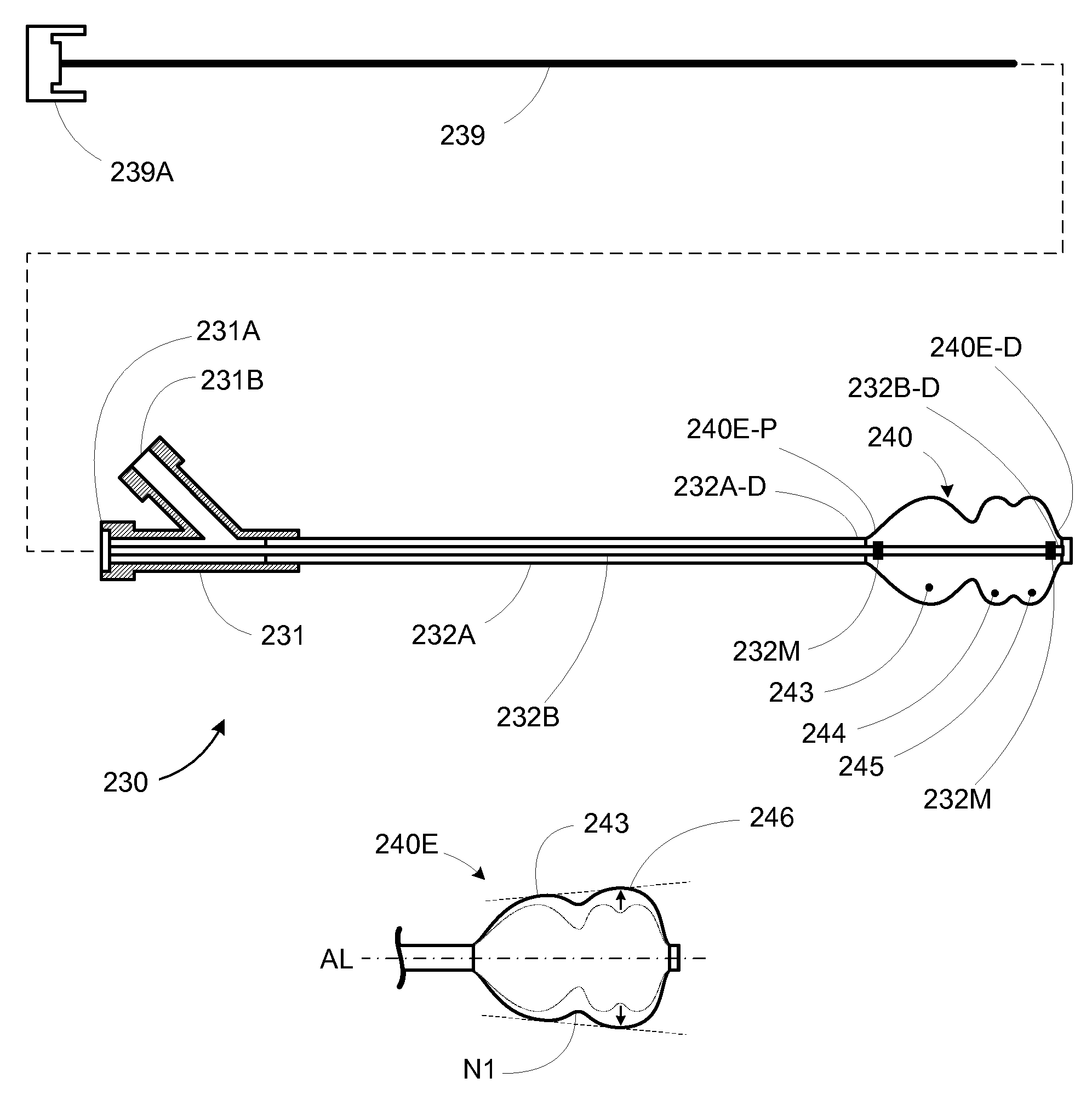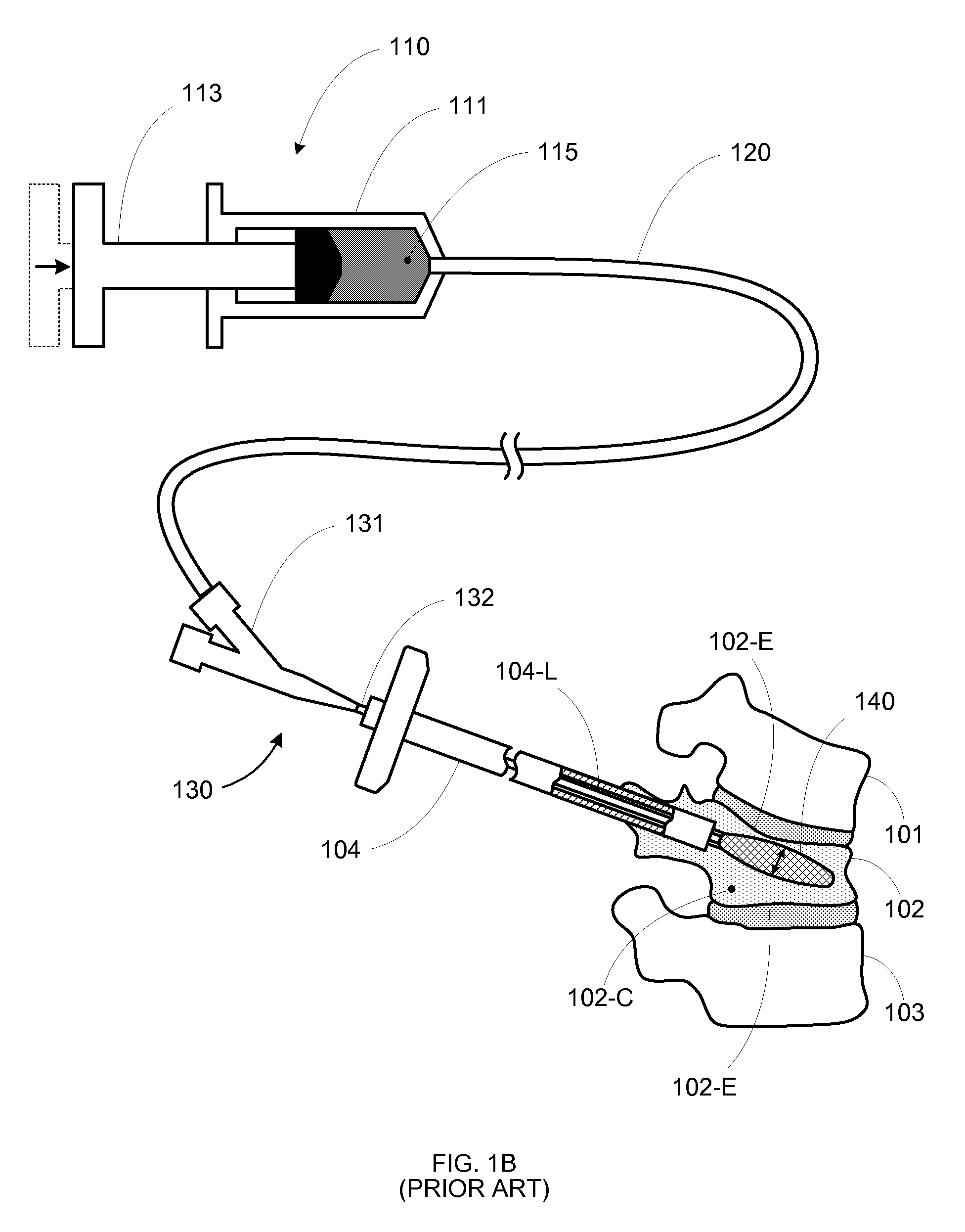Anterior inflation balloon
a balloon and balloon technology, applied in the field of surgical procedures, can solve the problems of reducing the recovery period, reducing the likelihood of height restoration of the vertebrae, and presenting minimally invasive procedures, so as to enhance the likelihood of height restoration of the vertebrae, and the distal expansion is grea
- Summary
- Abstract
- Description
- Claims
- Application Information
AI Technical Summary
Benefits of technology
Problems solved by technology
Method used
Image
Examples
Embodiment Construction
[0032]By providing a bone tamp with an inflatable structure having an expansion profile that exhibits greater distal expansion than proximal expansion (i.e., outwardly tapering), a kyphoplasty procedure can be performed in which lifting forces are more effectively applied to the endplates of a collapsed vertebral body, thereby enhancing the likelihood of height restoration of the vertebral body during the procedure.
[0033]FIGS. 2A-2H show an exemplary kyphoplasty procedure using an inflatable bone tamp exhibiting an outwardly tapering inflation profile. FIG. 2A shows a portion of a human vertebral column having vertebrae 201, 202, and 203. Vertebra 202 has collapsed due to a vertebral compression fracture (VCF) 202-F that could be the result of osteoporosis, cancer-related weakening of the bone, and / or physical trauma. The abnormal curvature CK of the spine caused by VCF 202-F can lead to severe pain and further fracturing of adjacent vertebral bodies.
[0034]FIG. 2B shows a cannula 20...
PUM
 Login to View More
Login to View More Abstract
Description
Claims
Application Information
 Login to View More
Login to View More - R&D
- Intellectual Property
- Life Sciences
- Materials
- Tech Scout
- Unparalleled Data Quality
- Higher Quality Content
- 60% Fewer Hallucinations
Browse by: Latest US Patents, China's latest patents, Technical Efficacy Thesaurus, Application Domain, Technology Topic, Popular Technical Reports.
© 2025 PatSnap. All rights reserved.Legal|Privacy policy|Modern Slavery Act Transparency Statement|Sitemap|About US| Contact US: help@patsnap.com



